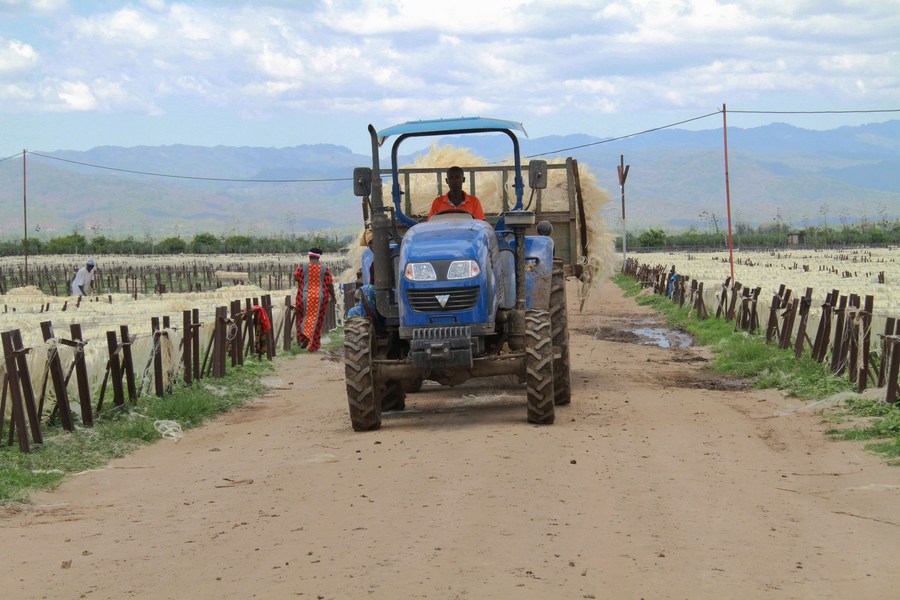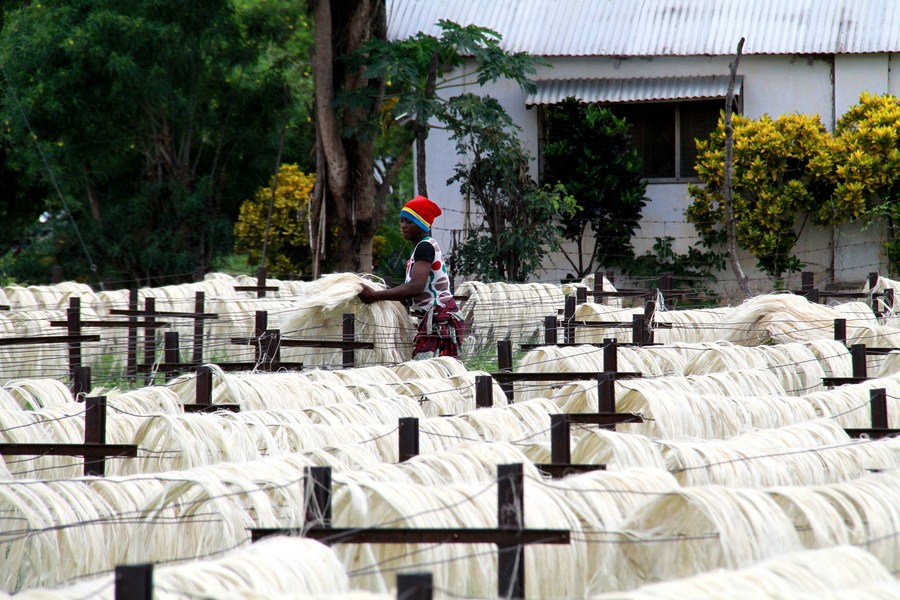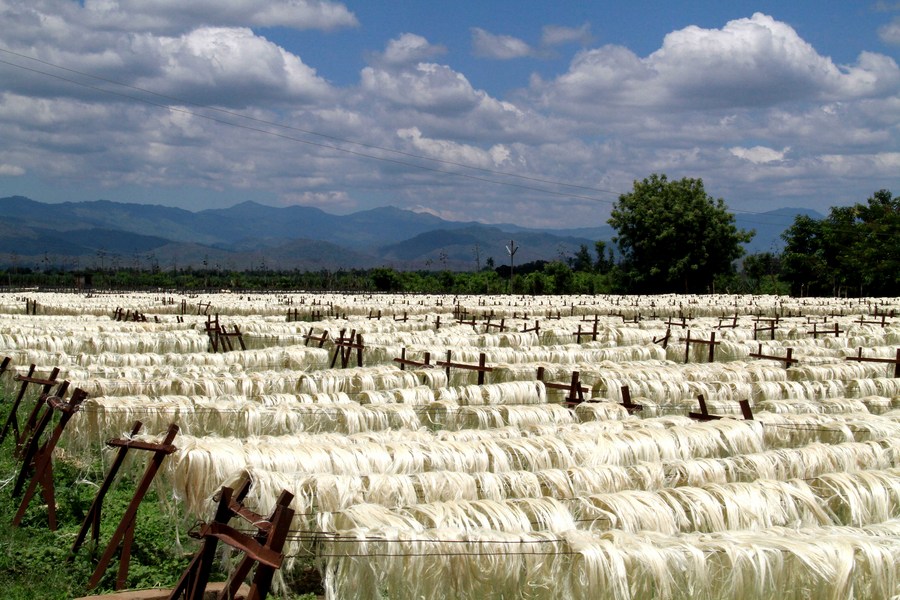
File photo taken on Nov. 15, 2017 shows a sisal field in a farm in Tanzania's Morogoro region. (Xinhua/Li Sibo)
The government of Tanzania's recent resolve to revive cultivation of sisal has perked smallholder farmers up in the east African nation of about 55 million people. The Tanzania Sisal Board plans to revive sisal production from the current 36,000 tons of the crop annually to 120,000 tons annually by 2025.
DAR ES SALAAM, June 11 (Xinhua) -- The government of Tanzania's recent resolve to revive cultivation of sisal has perked smallholder farmers up in the east African nation of about 55 million people.
"The restoration of sisal farming marks the end of poverty to tens of hundreds of smallholder farmers who depended on the crop to earn money for paying school fees, medical bills and constructing decent housing," said Athman Kaoneka, a smallholder farmer and secretary of Magoma agricultural and marketing cooperative society in Korogwe district in Tanga region.
Kaoneka who leads the society with about 180 members of smallholder sisal farmers was reacting to the government's recent announcement to revive production of sisal.

File photo taken on Nov. 15, 2017 shows a local worker transports sisal fiber at a farm in Tanzania's Morogoro region. (Xinhua/Li Sibo)
The farmer said the society started farming sisal in 2000 but since then they have been frustrated as they faced various challenges, including unreliable market and poor prices for their sisal.
"We used to produce 200 tons from 2,015 hectares of sisal field. But with the government's support we are now planning to increase our production as we are assured of a reliable market with attractive prices for the crop," he said.
Saddy Kambona, acting director general of the Tanzania Sisal Board (TSB), told Xinhua in a telephone interview that the body had drawn up strategies aimed at reviving the crop.
The TSB plans to revive sisal production from the current 36,000 tons of the crop annually to 120,000 tons annually by 2025.

File photo taken on Nov. 15, 2017 shows a local worker dries sisal fiber at a farm in Tanzania's Morogoro region. (Xinhua/Li Sibo)
"First and foremost TSB will mobilize as many smallholder farmers as possible to start cultivating sisal," said Kambona.
He said they are planning to use the Brazil's model in growing sisal, adding that in Brazil, the world's leading sisal producer, the majority of sisal growers are smallholder farmers.
"We need to increase the number of smallholder farmers from the current 7,551 who produce about 8,600 tons of sisal annually to at least 150,000 farmers," said Kambona.
We are also planning to adopt hybrid seeds that mature within shorter period and are more resistant to hostile conditions and pesticides, said Kambona.

File photo taken on Nov. 15, 2017 shows sisal fibre in a farm in Tanzania's Morogoro region. (Xinhua/Li Sibo)
He said the TSB is also in the process of acquiring 20,000 hectares of sisal farms that had been abandoned by investors for quite a long time and the land will be distributed to smallholder farmers.
He said another strategy is acquisition of state-of-the-art machinery for processing sisal into various products such as carpets and decorations.
During its peak production in Tanzania in the 1960s, sisal earned the country handsome foreign exchange but production of the cash crop deteriorated to low levels due to poor management.
Prime Minister Kassim Majaliwa said the revival of sisal production is part of the government's plan to revive production of all strategic crops, including cashew nuts, tea, tobacco, cotton, coffee and palm oil.
Tanzania's leading sisal growing regions are Tanga, Morogoro, Kilimanjaro, Coast, Lindi and Mtwara.



